
Navigation
Install the app
How to install the app on iOS
Follow along with the video below to see how to install our site as a web app on your home screen.
Note: This feature may not be available in some browsers.
More options
You are using an out of date browser. It may not display this or other websites correctly.
You should upgrade or use an alternative browser.
You should upgrade or use an alternative browser.
Button with A.B.B. Instituted 1837 - what was the full name?
- Thread starter hhbooker2
- Start date
BuckleBoy
Gold Member
Was this button a dug find? If it is, could you tell us which state you found it in?
I'm having some trouble finding it...
Are you certain it's a military school?
Regards,
Buckleboy
I'm having some trouble finding it...
Are you certain it's a military school?
Regards,
Buckleboy
Upvote
0
- Thread starter
- #3
BuckleBoy said:Was this button a dug find? If it is, could you tell us which state you found it in?
I'm having some trouble finding it...
Are you certain it's a military school?
Regards,
Greetings & Salutations! Had imagined it to be a military school?
Sarge Booker of Tujunga, California
Buckleboy
Attachments
-
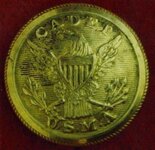 United States Military Academy Cadet.jpg52.6 KB · Views: 372
United States Military Academy Cadet.jpg52.6 KB · Views: 372 -
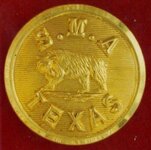 San Marcos Academy (SU372).jpg54.6 KB · Views: 383
San Marcos Academy (SU372).jpg54.6 KB · Views: 383 -
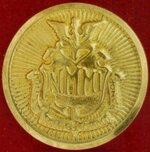 1893 New Mexico Military Institute (SU281).jpg59.4 KB · Views: 371
1893 New Mexico Military Institute (SU281).jpg59.4 KB · Views: 371 -
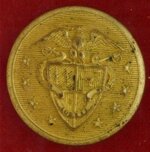 1884 Saint John\'s Military Academy (SU377).jpg53 KB · Views: 374
1884 Saint John\'s Military Academy (SU377).jpg53 KB · Views: 374 -
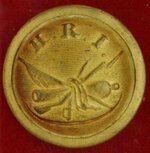 1854 Hudson River Institute (SU166).jpg48 KB · Views: 371
1854 Hudson River Institute (SU166).jpg48 KB · Views: 371 -
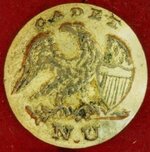 1819 Norwich University (SU287).jpg58.7 KB · Views: 376
1819 Norwich University (SU287).jpg58.7 KB · Views: 376
Upvote
0
BuckleBoy
Gold Member
Most Military buttons have initials that end in either "M.A." for Military Academy or "M.I." for Military Institute...
I don't know that that's what this button is...
The backmark isn't much help in nailing down the date, since it was used for 100+ years...
I would say that this button is later than 1837--maybe 100 years later or even 125 years later...to have a date like that on it.
Is it DUG?
I don't know that that's what this button is...
The backmark isn't much help in nailing down the date, since it was used for 100+ years...
I would say that this button is later than 1837--maybe 100 years later or even 125 years later...to have a date like that on it.
Is it DUG?
Upvote
0
- Thread starter
- #7
BuckleBoy said:Most Military buttons have initials that end in either "M.A." for Military Academy or "M.I." for Military Institute...
I don't know that that's what this button is...
The backmark isn't much help in nailing down the date, since it was used for 100+ years...
I would say that this button is later than 1837--maybe 100 years later or even 125 years later...to have a date like that on it.
Is it DUG? No! It was acquired as you see it, really good condition. It hd me stumped too? Maybe someone out there knows the answer? Thanks, much appreciated. Sarge Booker
Attachments
Upvote
0
Bigcypresshunter
Gold Member
- Dec 15, 2004
- 27,000
- 3,339
- Detector(s) used
- 70's Whites TM Amphibian, HH Pulse, Ace 250
- Primary Interest:
- Beach & Shallow Water Hunting
Excuse me Sarge, but what do these last three pictures (Perry and Byrd) you posted have to do with your button? 

Please post a pic of the back of this button in question and we can help with the age. A quick search of Waterbury reavealed that ABB may be also Aylesbury. Try searching under this name. http://www.waterburybutton.com/user-cgi/patterns.cgi?catg=Career Uniform&subcatg=Uniform&id=5518

Please post a pic of the back of this button in question and we can help with the age. A quick search of Waterbury reavealed that ABB may be also Aylesbury. Try searching under this name. http://www.waterburybutton.com/user-cgi/patterns.cgi?catg=Career Uniform&subcatg=Uniform&id=5518
Upvote
0
Fast_Dave
Full Member
This sounds like a real possibility. The American Brass Band was started in 1837 and looks like it's still running today. Here's a link to the website where I found the information. http://www.rihs.org/mssinv/Mss256.htm
Upvote
0
Bigcypresshunter
Gold Member
- Dec 15, 2004
- 27,000
- 3,339
- Detector(s) used
- 70's Whites TM Amphibian, HH Pulse, Ace 250
- Primary Interest:
- Beach & Shallow Water Hunting
Here is another but I cant read the button. http://www.waterburybutton.com/user...s=abb&keyword_submit.x=29&keyword_submit.y=12
Link doesnt work Dave...Fast_Dave said:This sounds like a real possibility. The American Brass Band was started in 1837 and looks like it's still running today. Here's a link to the website where I found the information. http://www.rihs.org/mssinv/Mss256.htm
Upvote
0
wildrider
Bronze Member
bigcypresshunter said:Here is another but I cant read the button. http://www.waterburybutton.com/user...s=abb&keyword_submit.x=29&keyword_submit.y=12
Link doesnt work Dave...Fast_Dave said:This sounds like a real possibility. The American Brass Band was started in 1837 and looks like it's still running today. Here's a link to the website where I found the information. http://www.rihs.org/mssinv/Mss256.htm
Try this: http://www.rihs.org/mssinv/Mss256.htm
Upvote
0
Fast_Dave
Full Member
No more Mr. Nice Guy. Here's the information as listed
Historical note:
The American Brass Band (ABB) is the oldest continuously running civilian concert band in the United States. An early form of the band was organized in 1825 by bugle player Joseph C. Greene; it was known then as the Providence Martial Team. In November 1837, the band became formally organized into the American Band and Orchestra of Providence, RI (aka the American Brass Band). There were 14 men in the band at this time; one of them was Benjamin P. Robinson, a fife and cymbal player who hosted the charter meeting in his father's counting room basement. The ABB was an all-brass band whose repertoire included classical music, marches, and popular standards. It steadily grew in renown as a concert and marching band throughout New England.
Greene temporarily left the ABB in 1839 to take on leadership of the Boston Brass Band; the band was conducted by Benjamin G. West until Greene's return in 1841. In 1853, the band became incorporated into a military band in the Second Brigade of the RI Militia. On April 17, 1861, the ABB volunteered to serve in the Civil War with the First Regiment Rhode Island Detached Militia. Its three month service involved carrying wounded soldiers off the battlefields in stretchers. The band saw action at the Battle of Bull Run, VA on July 21, 1861 before its service ended. After the Civil War, the band was designated the official band of New England and marched in multiple presidential inaugurations.
The ABB's popularity skyrocketed after David Wallis Reeves, a renowned cornetist and "famous writer of military marches," assumed leadership in 1866. Reeves added a woodwinds section to the formerly all-brass band and lead it on several national tours. He also discovered Bowen R. Church and trained him to be a nationally-known cornet virtuoso. Reeves's personal celebrity grew as he composed over 100 marches that included the famous "Second Regiment C.N.G." march. Eventually, the ABB came to be known (especially in the Boston area) as Reeves' American Band and Orchestra or Reeves' Band. This name helped distinguish it from the growing number of "American" bands that were based throughout New England.
Two major milestones in the band's history took place in 1887. One was the fiftieth anniversary concert in which the surviving original band members (including Joseph Greene) came out of retirement to play with the current roster of musicians. The other was the formation of the American Brass Band Veterans Association on November 26, 1887. The first set of officers of this association included Samuel D. Sprink as President and William E. Whiting as Secretary. In October of 1892, D.W. Reeves accepted the directorship of Gilmore's 22nd Regiment Band of New York. He returned to the ABB after one year and remained as conductor until his death in 1900.
At this point Bowen R. Church, the assistant conductor, took over as the band's general director like he had done in 1892. But it was not long before Church resumed his former position as assistant conductor. He was succeeded as leader first by Herbert L. Clarke, then Edward M. Fay. Fay's decision to rename the band Fay's American Band (circa 1906) was a source of much controversy amongst past and present members. By now, the band's popularity and artistic integrity were starting to decline from what it had been during the Reeves period, although it continued to tour successfully on a national level. It was around this time that Robinson, the last of the band's charter members, passed away at age 96.
Warren Fales, town councilman of East Providence and financial backer of the ABB, soon replaced Fay as general director. Although he was not a musician, Fales helped the ABB regain some of its former prestige and formed a tradition where each concert began with one of D.W. Reeves's marches. The band leaders that came after Fales were Joseph Lemaire, Frank Wollenberg and Alfred Archambault. In 1978, ABB underwent a complete reorganization under a new music director: Dr. Francis M. Marciniak, Director of Bands at Rhode Island College. Dr. Gene Pollart took over as director in 1996.
Bibliography
History of the American Band. Viewed June 24, 2005. http://www.ric.edu/am_band/history.htm
Historical note:
The American Brass Band (ABB) is the oldest continuously running civilian concert band in the United States. An early form of the band was organized in 1825 by bugle player Joseph C. Greene; it was known then as the Providence Martial Team. In November 1837, the band became formally organized into the American Band and Orchestra of Providence, RI (aka the American Brass Band). There were 14 men in the band at this time; one of them was Benjamin P. Robinson, a fife and cymbal player who hosted the charter meeting in his father's counting room basement. The ABB was an all-brass band whose repertoire included classical music, marches, and popular standards. It steadily grew in renown as a concert and marching band throughout New England.
Greene temporarily left the ABB in 1839 to take on leadership of the Boston Brass Band; the band was conducted by Benjamin G. West until Greene's return in 1841. In 1853, the band became incorporated into a military band in the Second Brigade of the RI Militia. On April 17, 1861, the ABB volunteered to serve in the Civil War with the First Regiment Rhode Island Detached Militia. Its three month service involved carrying wounded soldiers off the battlefields in stretchers. The band saw action at the Battle of Bull Run, VA on July 21, 1861 before its service ended. After the Civil War, the band was designated the official band of New England and marched in multiple presidential inaugurations.
The ABB's popularity skyrocketed after David Wallis Reeves, a renowned cornetist and "famous writer of military marches," assumed leadership in 1866. Reeves added a woodwinds section to the formerly all-brass band and lead it on several national tours. He also discovered Bowen R. Church and trained him to be a nationally-known cornet virtuoso. Reeves's personal celebrity grew as he composed over 100 marches that included the famous "Second Regiment C.N.G." march. Eventually, the ABB came to be known (especially in the Boston area) as Reeves' American Band and Orchestra or Reeves' Band. This name helped distinguish it from the growing number of "American" bands that were based throughout New England.
Two major milestones in the band's history took place in 1887. One was the fiftieth anniversary concert in which the surviving original band members (including Joseph Greene) came out of retirement to play with the current roster of musicians. The other was the formation of the American Brass Band Veterans Association on November 26, 1887. The first set of officers of this association included Samuel D. Sprink as President and William E. Whiting as Secretary. In October of 1892, D.W. Reeves accepted the directorship of Gilmore's 22nd Regiment Band of New York. He returned to the ABB after one year and remained as conductor until his death in 1900.
At this point Bowen R. Church, the assistant conductor, took over as the band's general director like he had done in 1892. But it was not long before Church resumed his former position as assistant conductor. He was succeeded as leader first by Herbert L. Clarke, then Edward M. Fay. Fay's decision to rename the band Fay's American Band (circa 1906) was a source of much controversy amongst past and present members. By now, the band's popularity and artistic integrity were starting to decline from what it had been during the Reeves period, although it continued to tour successfully on a national level. It was around this time that Robinson, the last of the band's charter members, passed away at age 96.
Warren Fales, town councilman of East Providence and financial backer of the ABB, soon replaced Fay as general director. Although he was not a musician, Fales helped the ABB regain some of its former prestige and formed a tradition where each concert began with one of D.W. Reeves's marches. The band leaders that came after Fales were Joseph Lemaire, Frank Wollenberg and Alfred Archambault. In 1978, ABB underwent a complete reorganization under a new music director: Dr. Francis M. Marciniak, Director of Bands at Rhode Island College. Dr. Gene Pollart took over as director in 1996.
Bibliography
History of the American Band. Viewed June 24, 2005. http://www.ric.edu/am_band/history.htm
Upvote
0
wildrider
Bronze Member
Fast_Dave said:No more Mr. Nice Guy. Here's the information as listed
Historical note:
The American Brass Band (ABB) is the oldest continuously running civilian concert band in the United States. An early form of the band was organized in 1825 by bugle player Joseph C. Greene; it was known then as the Providence Martial Team. In November 1837, the band became formally organized into the American Band and Orchestra of Providence, RI (aka the American Brass Band). There were 14 men in the band at this time; one of them was Benjamin P. Robinson, a fife and cymbal player who hosted the charter meeting in his father's counting room basement. The ABB was an all-brass band whose repertoire included classical music, marches, and popular standards. It steadily grew in renown as a concert and marching band throughout New England.
Greene temporarily left the ABB in 1839 to take on leadership of the Boston Brass Band; the band was conducted by Benjamin G. West until Greene's return in 1841. In 1853, the band became incorporated into a military band in the Second Brigade of the RI Militia. On April 17, 1861, the ABB volunteered to serve in the Civil War with the First Regiment Rhode Island Detached Militia. Its three month service involved carrying wounded soldiers off the battlefields in stretchers. The band saw action at the Battle of Bull Run, VA on July 21, 1861 before its service ended. After the Civil War, the band was designated the official band of New England and marched in multiple presidential inaugurations.
The ABB's popularity skyrocketed after David Wallis Reeves, a renowned cornetist and "famous writer of military marches," assumed leadership in 1866. Reeves added a woodwinds section to the formerly all-brass band and lead it on several national tours. He also discovered Bowen R. Church and trained him to be a nationally-known cornet virtuoso. Reeves's personal celebrity grew as he composed over 100 marches that included the famous "Second Regiment C.N.G." march. Eventually, the ABB came to be known (especially in the Boston area) as Reeves' American Band and Orchestra or Reeves' Band. This name helped distinguish it from the growing number of "American" bands that were based throughout New England.
Two major milestones in the band's history took place in 1887. One was the fiftieth anniversary concert in which the surviving original band members (including Joseph Greene) came out of retirement to play with the current roster of musicians. The other was the formation of the American Brass Band Veterans Association on November 26, 1887. The first set of officers of this association included Samuel D. Sprink as President and William E. Whiting as Secretary. In October of 1892, D.W. Reeves accepted the directorship of Gilmore's 22nd Regiment Band of New York. He returned to the ABB after one year and remained as conductor until his death in 1900.
At this point Bowen R. Church, the assistant conductor, took over as the band's general director like he had done in 1892. But it was not long before Church resumed his former position as assistant conductor. He was succeeded as leader first by Herbert L. Clarke, then Edward M. Fay. Fay's decision to rename the band Fay's American Band (circa 1906) was a source of much controversy amongst past and present members. By now, the band's popularity and artistic integrity were starting to decline from what it had been during the Reeves period, although it continued to tour successfully on a national level. It was around this time that Robinson, the last of the band's charter members, passed away at age 96.
Warren Fales, town councilman of East Providence and financial backer of the ABB, soon replaced Fay as general director. Although he was not a musician, Fales helped the ABB regain some of its former prestige and formed a tradition where each concert began with one of D.W. Reeves's marches. The band leaders that came after Fales were Joseph Lemaire, Frank Wollenberg and Alfred Archambault. In 1978, ABB underwent a complete reorganization under a new music director: Dr. Francis M. Marciniak, Director of Bands at Rhode Island College. Dr. Gene Pollart took over as director in 1996.
Bibliography
History of the American Band. Viewed June 24, 2005. http://www.ric.edu/am_band/history.htm
Works for me.
w
Upvote
0
Bigcypresshunter
Gold Member
- Dec 15, 2004
- 27,000
- 3,339
- Detector(s) used
- 70's Whites TM Amphibian, HH Pulse, Ace 250
- Primary Interest:
- Beach & Shallow Water Hunting
It sure sounds like it could be American Brass Band and it is great research, the date matches....
...but what do yall think about Waterbury now making two different ABB (Aylesbury) career uniform buttons?
http://www.waterburybutton.com/user...s=abb&keyword_submit.x=29&keyword_submit.y=12
Without seeing a pic, I would say that The backmark is pre-1965 type, and is no longer made by Waterbury.
Email: [email protected] • Telephone: (800) 928-1812 • Fax: (203) 271-9852
or via email at [email protected]
...but what do yall think about Waterbury now making two different ABB (Aylesbury) career uniform buttons?
http://www.waterburybutton.com/user...s=abb&keyword_submit.x=29&keyword_submit.y=12
Without seeing a pic, I would say that The backmark is pre-1965 type, and is no longer made by Waterbury.
Email: [email protected] • Telephone: (800) 928-1812 • Fax: (203) 271-9852
or via email at [email protected]
Upvote
0
Top Member Reactions
-
 3456
3456 -
 2027
2027 -
 1956
1956 -
 1157
1157 -
 1101
1101 -
 919
919 -
 812
812 -
 807
807 -
 803
803 -
 786
786 -
 746
746 -
 529
529 -
 477
477 -
 475
475 -
 445
445 -
 422
422 -
 417
417 -
 416
416 -
E
415
-
 391
391
Users who are viewing this thread
Total: 2 (members: 0, guests: 2)


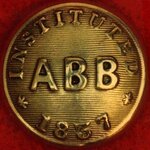

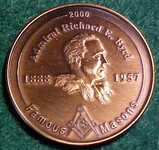
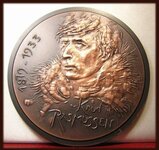
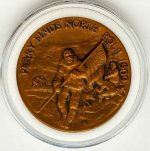
 Sarge Booker of Tujunga, California
Sarge Booker of Tujunga, California


